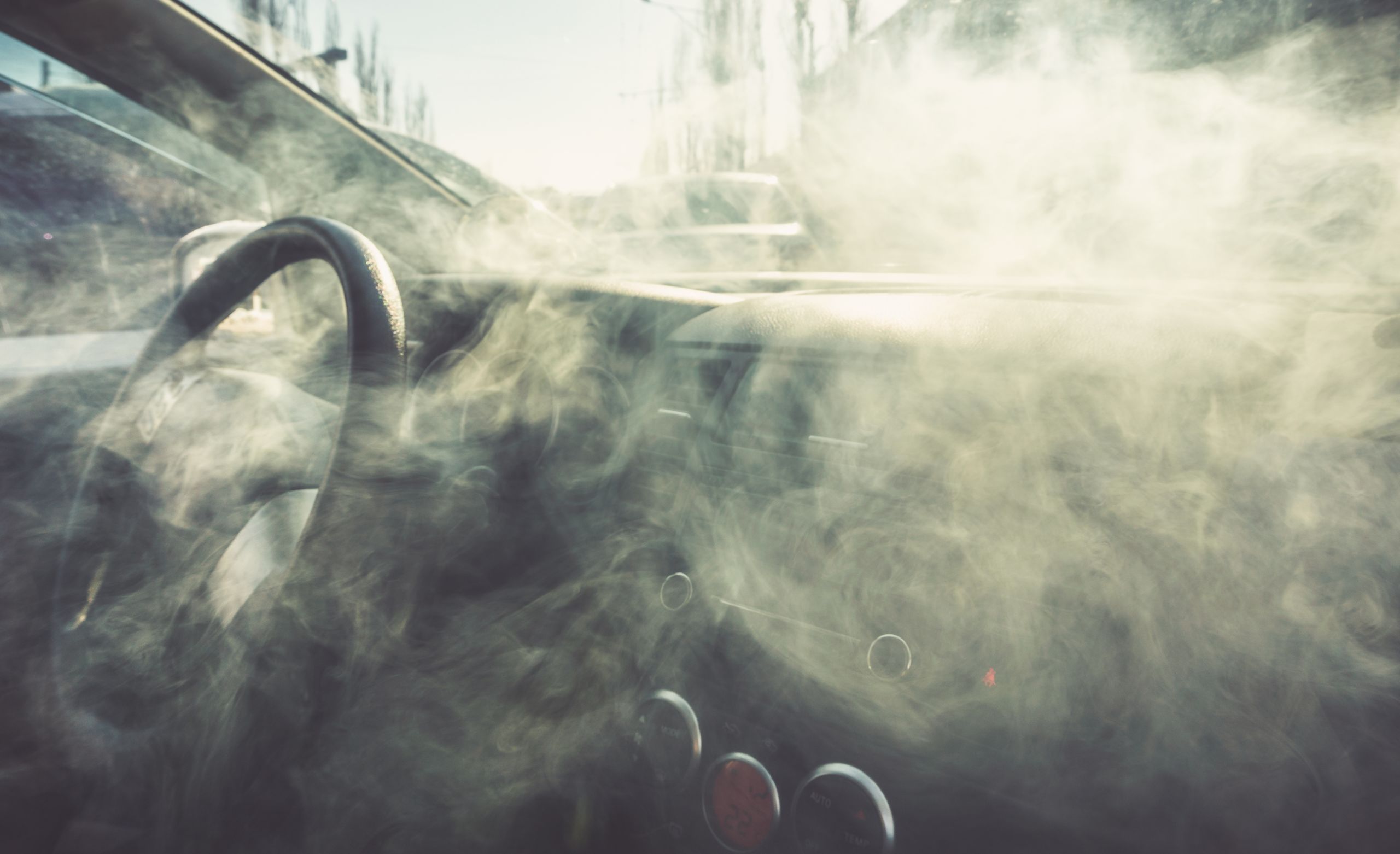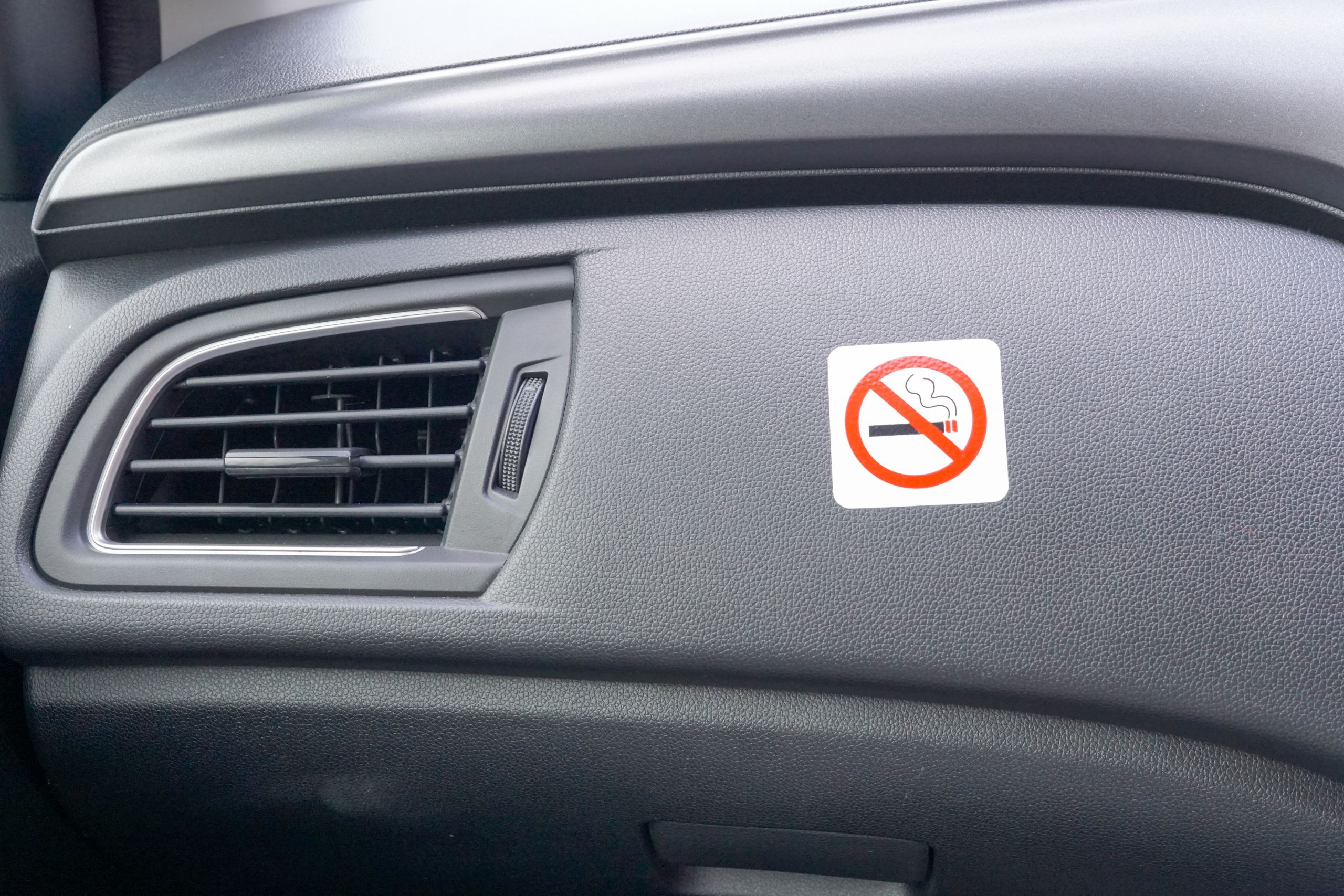Take it Right Outside!
The Respiratory Group at the University of Aberdeen has filled a gap in the evidence base about the dangers of second-hand smoke inside cars and homes, prompting new legislation and underpinning significant health improvements in Scotland.

More than 80% of second-hand smoke is invisible. It has no smell, but we know it contains harmful chemicals that can get into the lungs and even the bloodstream. Legislation introduced across the UK as far back as 2006 responded to these facts by banning smoking in enclosed public places. However, the regulations did not include private cars or residential accommodation. It seemed obvious to Aberdeen’s Respiratory Group that smoke-free homes and cars were likely to bring much greater health benefits to children than public spaces, but evidence supporting this was limited. The research team decided to target this gap and build a new body of evidence.
Second-hand smoke in cars
The team set to work examining the concentrations of ‘fine particulate matter’ or PM2.5 in typical car journeys. Gathering data from over 100 car journeys, the team recorded second-hand smoke concentrations in smoking and non-smoking trips. Using state of the art optical particle measuring equipment and combining methods developed for measuring occupational exposure to airborne hazards with the science on the public health impacts of air quality, the Aberdeen researchers were able to show that smoking car journeys had average concentrations of PM2.5 more than 10 times higher than those found in smoke-free journeys.
The World Health Organisations guideline for PM2.5 is an annual mean of 10 micrograms per cubic metre of air (10µg/m3). The team’s results showed a mean PM2.5 concentration for non-smoking journeys of 7.4µg/m3. This compared to a mean PM2.5 concentration of for 85µg/m3 smoking journeys. These findings were cited in parliamentary debates in both Scotland and England, leading to bans in smoking in cars carrying children in England, Wales and Scotland in 2015.
What is PM2.5?
Particulate matter represents the mixture of particles that are found in the air and is used as a common proxy indicator for air pollution. Some of these particles are large enough to be seen – like soot and dust – while others are much smaller and therefore invisible. Particles that are less than 2.5 micrometres (about 30 times smaller than the diameter of strand of human hair) are considered to pose the most significant risk to human health, as they can be inhaled, getting into the lungs and even into the bloodstream. These particles are known as PM2.5. Find out more.

"a study conducted in Scotland… suggested that air quality inside a smoker’s car was comparable to industrial smog in cities such as Beijing or Moscow, even when the driver has the window open… Research by Aberdeen University found that 7% of 11-year olds experience smoking in cars."
Second-hand smoke in homes
The team then moved their focus to second-hand smoke in homes in Scotland, providing the first evidence of smoke exposure in residential settings. Working with smoking mothers of children aged 6 and under, the researchers gathered relevant data using a low-cost monitor, enabling them to reach over 100 households. Not only did the results prove the efficacy of the monitor – creating monitoring options one tenth of the price of other instruments generally used for this type of work – they also showed that second-hand smoke can linger indoors for up to 5 hours after a cigarette.
The study provided the material for the Scottish Government’s ‘Take it Right Outside’ media campaign, launched in 2014 on national TV and radio and still being promoted by the NHS online. The campaign focused on the key research findings that second-hand smoke can linger for up to 5 hours after your last cigarette and had one of the highest recall of any health education advert among the target group of smoking parents.
Reducing exposure to second-hand smoke
The Aberdeen team has continued to monitor the impact of their research. Evaluation of figures from the Scottish Health Survey found that the proportion of children exposed to second-hand smoke at home fell from 12% in 2012 to 6% in 2015, and stabilised there. This equates to some 50,000 children in Scotland now being protected from the harms of second-hand smoke within their home.
More recently, a study published in Lancet Public Health in 2020 looked at Scottish hospital admissions for asthma to see if there was a decrease following the Take it Right Outside campaign. The team examined data on all hospital admissions in Scotland between 2000 and 2018 for children aged under 16, and found that the data showed a fall of 0.5% per month in admissions for under 5s relative to the underlying trend. These results demonstrate a continuing downwards trend, with significant reductions in the monthly number of admissions after the Take it Right Outside campaign was launched.


Impacts
- The Aberdeen research findings have been used as evidence in parliamentary debates in Scotland and Westminster, informing and influencing legislation to ban smoking in cars carrying children in order to protect them from second-hand smoke.
- The team provided material and key messaging for the Scottish Government’s ‘Take it Right Outside’ campaign, starting in 2014 and still in use today. Campaign evaluation shows that it had one of the highest recall of any health education advert among the target group of smoking parents, with over 88% of adults living in a home with a child under 5 years old confirming recall.
- Being able to quantify the levels of second-hand smoke within smokers’ homes where children lived provided evidence that was used to inform the Scottish Government’s Tobacco strategy and associated targets to reduce the proportion of children in Scotland exposed to second-hand smoke at home.
- Most importantly, by influencing policy and public health campaigns, the Aberdeen research has resulted in significant health improvements for children in Scotland, evidenced by a reduction in the proportion of children exposed to second-hand smoke at home and decreasing hospital admissions for asthma for children under 5.


